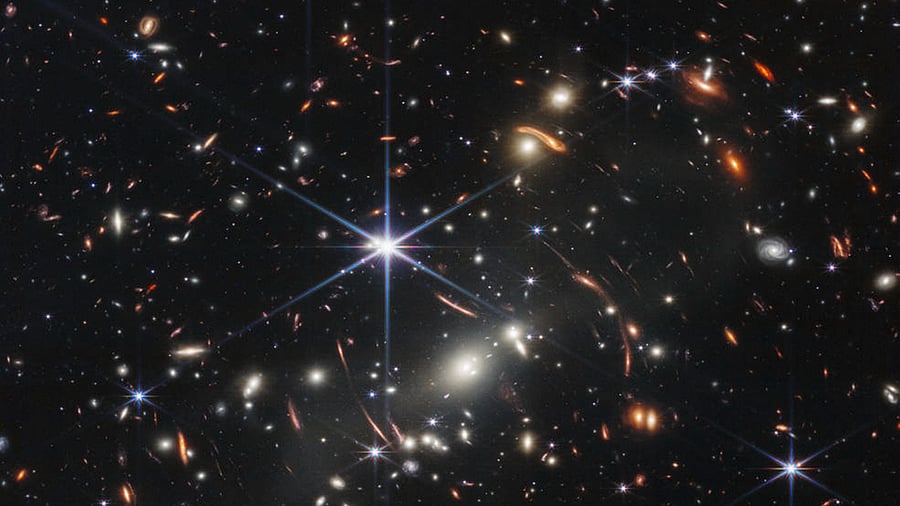
What is the First Deep Field?
A composite made from images at various wavelengths captured by the JWST’s Near-Infrared Camera (NIRCam), the image shows SMACS 0723 as it appeared 4.6 billion years ago.
The distortion seen in the image is the result of an effect called gravitational lensing, wherein the combined mass of massive celestial objects (a galaxy cluster in this instance) distorts and bends light, essentially acting as a cosmic magnifying glass that brings into view galaxies and other celestial objects far more distant than SMACS 0723. The result? Thousands of hitherto unseen galaxies from the distant universe are revealed, including some of the faintest galaxies ever captured by infrared imaging.
"Webb's NIRCam has brought those distant galaxies into sharp focus - they have tiny, faint structures that have never been seen before, including star clusters and diffuse features," said a NASA statement. "Researchers will soon begin to learn more about the galaxies' masses, ages, histories, and compositions, as Webb seeks the earliest galaxies in the universe."
Why it matters
While the captured image is a significant scientific achievement, it also demonstrates the JWST's capabilities, which has long been touted as the successor to the long-serving Hubble Space Telescope (HST). There are several differences between the JWST and the HST but the primary point of distinction is their vastly different imaging capabilities.
The HST, launched in 1990, was designed primarily as an optical space observatory optimised for capturing light at wavelengths visible to the human eye. This, however, turned out to be a limitation when it came to observing the distant universe and some of the earliest galaxies in the cosmos.
Due to the expansion of the universe, the further away an object is from the Earth, the faster it moves away. This gives rise to an effect called redshifting, wherein light emitted from the object (even if it is initially of a shorter wavelength) is stretched into longer wavelengths and becomes redder.
Since infrared light is outside the visible spectrum and because Hubble is optimised for capturing light at visible wavelengths, extremely distant objects, which appear very red, are invisible to the HST. The JSWT, however, is designed specifically for infrared astronomy, allowing it to spot these incredibly distant objects.
In essence, this allows the JWST to peer deeper into the history of the universe and glean insights into the formation of star systems a mere 100 million to 250 million years after the Big Bang.
What happens next?
The First Deep Field is a set of five images captured by the JWST in its first round of imaging. From July 12, NASA will release the remaining images, giving humanity stunning views of the Carina Nebula, a planet named WASP-96b, the Southern Ring Nebula, and the compact galaxy group known as Stephan's Quintet.
Cosmologists are also hoping to learn more about the specifics of the formation of early galaxies and the emergence of the first light in the universe.
